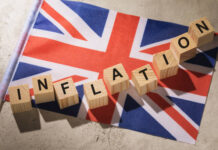Markets
The Bank of Japan’s first rate hike since 2007 that ended an 8-year experiment with negative rates remained talk of the town today. Ironically though, the Japanese yen nor yields profited from what is nevertheless a historical shift, quite the contrary. This morning’s policy outcome was telegraphed well in advance to markets and there’s a dovish twist to each of the separate decisions: a) the rate hike won’t be met by swift follow-through action; b) abandoning YCC is sugarcoated by a still-lofty regular bond buying scheme and a BoJ backstop to prevent yields from rising too sharply and c) ending ETF and J-REIT purchases was simply officializing what the BoJ already stopped doing since 2023. Governor Ueda during the press conference stressed the need to keep conditions accommodative. The price target is in sight but certainty of hitting it isn’t 100% yet, dixit Ueda. What the BoJ probably wanted was to keep volatility low. But trying to nip speculation for aggressive tightening in the bud backfired, forcing the yen to lose almost 1% against the dollar instead. Ueda added that if the currency impacts the outlook materially, the BoJ will consider a policy response. With USD/JPY (150.54) rapidly nearing the 2022 multi-decade high (151.95) this may be the case sooner rather than later. Japanese yields ended the day up to 2.6 bps (10-y) lower and stock markets cheered (+1%).
Market moves outside Japan were relatively muted ahead of tomorrow’s Fed meeting. The dollar continues to trade in a sweet spot. EUR/USD hit an intraday low of 1.0835 before paring losses to 1.0864. DXY flirted with the 104 big figure. Currencies Down Under trade on the backfoot. The Reserve Bank of Australia moderated its hawkish tone and that weighed on Aussie yields and the local dollar with spill-overs to neighbouring New Zealand. Core bond yields lose a few bps in technical trading, shying away from resistance levels marked by the year-to-date highs. US rates lose up 4.3 bps, German yields drop 3.6 bps with the front-end of both curves outperforming. Oil prices extend their recent winning streak to $87.2 p/b. Economic data were largely ignored by markets. They included a better-than-expected German ZEW indicator on the expectations component hitting the highest level since before the Russian invasion. US housing data (starts and building permits) also topped forecasts.
News & Views
Canadian inflation accelerated “only” to 0.3% M/M from flat in January whereas consensus feared a 0.6% monthly increase. The largest contributors to the monthly increase were higher prices for travel tours and gasoline. February was the first month since October 2021 that grocery prices increased at a slower rate than headline inflation. As a consequence, the Y/Y-figure slowed from 2.9% to 2.8% (vs 3.1% forecast and matching the lowest level since March 2021). The Bank of Canada’s preferred inflation gauge, the CPI core – trimmed mean slowed from 3.4% Y/Y to 3.2% Y/Y, beating the flat expected consensus and recording the lowest level since the summer of 2021. Canadian markets reacted to the beneficial inflation print. CAD swap rates slide 5 to 12 bps with the front end of the curve outperforming. USD/CAD tests the YTD high around 1.36 on a combination of USD strength and CAD weakness. The Bank of Canada recently shifted from a tightening bias to judging how long policy rates would have to remain stable at the current level (5%). Canadian money markets attach an 80% probability to a first 25 bps rate at the June policy meeting.
The Swiss government cut its inflation forecast for this year from 1.9% to 1.5%. The 2025 estimate is unchanged from December at 1.1%. The downgrade of the State Secretariat for Economic Affairs is mainly because of the significantly lower January CPI reading (0.2% M/M & 1.3% Y/Y) despite a boost in VAT and electricity prices. The strengthening of the Swiss franc is at play as well. Growth forecasts are unchanged at 1.1% for this year and 1.7% next year. The Swiss National Bank meets on Thursday. Consensus expects an unchanged policy rate (1.75%) with the risk that they’ll already push through or at least put forward a 25 bps rate cut. Since early February, the Swiss franc weakened from EUR/CHF 0.93 to currently 0.9640. First strong resistance stands around 0.97.













